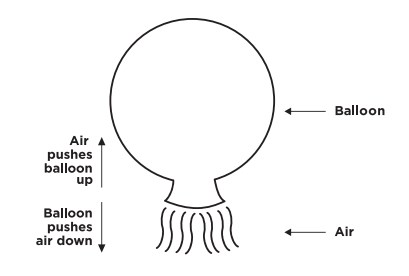In this activity, students learn about Newton’s Third Law by making balloon rockets.
Using a balloon, we can create a good demonstration for the type of propulsion that moves a rocket. When we inflate a balloon, we fill it with a pressurized gas (air). When we let go of the end, the air rushes out and pushes against the air around the balloon to move it in the opposite direction.

Newton describes this effect in his Third Law of Motion: for every action, there is always an equal and opposite reaction. The gas rushing out of the rocket or balloon is the action and the movement of the object in the opposite direction is the reaction.
Because balloon openings are wobbly, the flight path of a balloon is wobbly, too. The air escaping the balloon (the action) pushes out in every which way and the reaction of the balloon is to move in every which way, too.
One way to stabilize the direction of the balloon is to attach it to a simple track made of string. Once attached to a straight path, it’s easier to see the direct relationship between the size of the action (the amount of air escaping the balloon at once) and the resulting size of the reaction (the distance the balloon travels).

